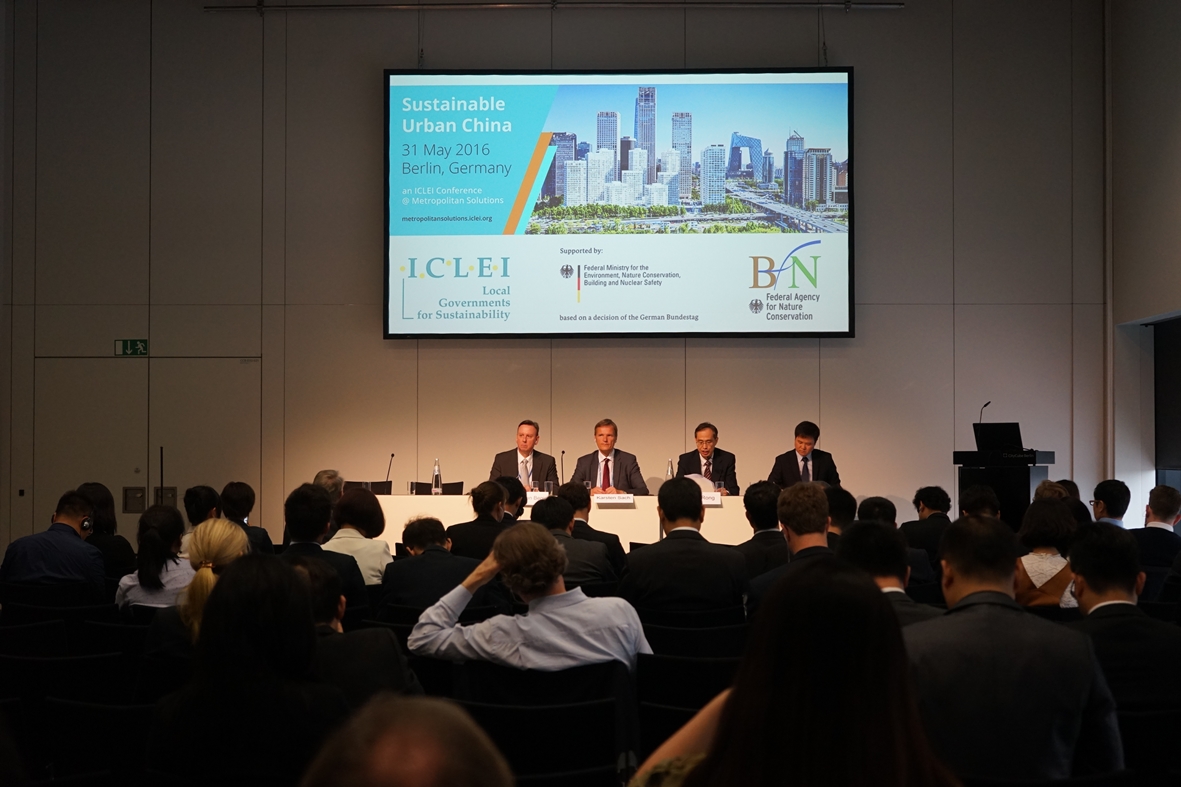Faster, more intense, with more devastating impacts: New IPCC report lays out the scientific basis of the climate emergency
The Intergovernmental Panel on Climate Change (IPCC) released a new report, Climate Change 2021: the Physical Science Basis, which brings together the most recent advances in climate science to outline the current state of climate change. The results are grave.
The opening line of the report’s Summary for Policymakers reads: “It is unequivocal that human influence has warmed the atmosphere, ocean and land.”
The report, which was approved by 195 national governments, shows the rapid human-induced change that is occurring in our climate. The concentration of CO2 in the atmosphere is the highest it has been in 2 million years, sea level rise is at its fastest in 3000 years and arctic sea ice is at its lowest levels in at least 1000 years.
“We now have a much clearer picture of the past, present and future climate, which is essential for understanding where we are headed, what can be done, and how we can prepare,” said Valerie Masson-Delmotte, Co-Chair of Working Group I, which made this contribution to the Sixth Assessment Report.

We are already seeing the effects of human-induced climate change around the globe. Extreme weather events, from wildfires across North America and Southern Europe to extreme flooding in China and Western Europe, and devastating tropical cyclones on the Indian and Atlantic coasts, show the real life consequences of a climate that has already warmed by 1.1 °C since the mid-1800s.
The science shows that continued warming will affect the climate in multiple ways. It will bring more intense rainfall and flooding in some regions, and increased drought, heat and wild-fires in others. Increased warming will amplify the melting of glaciers and ice sheets while sea level rise also increases.
In cities, these impacts may be amplified. According to the Summary for Policymakers, urbanization increases heavy precipitation over cities, and coastal cities will continue to see exacerbated flooding both from sea level rise and “extreme rainfall/riverflow events”. Cities and urban centers are also warmer than surrounding areas – often due to lack of natural cooling influences such as water and vegetation, according to the IPCC fact sheet on urban areas.
“The Working Group I report is the clearest evidence yet that we have changed the climate system in an unprecedented way. Furthermore it shows that many of these changes are irreversible for 100s to 1000s of years. This means that cities around the world will face continued and escalating climate-related challenges such as hot extremes, heavy precipitation and rising sea levels, putting lives, ecosystems and infrastructure at risk. The Working Group II and III reports to be released early in 2022 will examine the impacts of these unprecedented changes and the options we have for ambitious and rapid action to enhance resilience and achieve net-zero CO2 emissions in order to create a safer, more sustainable and equitable world,” said Debra Roberts, IPCC Co-Chair of Working Group II.
“Today’s IPCC report on the physical science basis of climate change unfortunately reiterated with even greater certainty that human-induced climate change is now happening faster and more intensely than predicted in their Special Report on Global Warming of 1.5 °C,” said Gino Van Begin, Secretary General of ICLEI – Local Governments for Sustainability.
He continued, ”Today’s report also contains two important lessons for local and regional governments. First, using data from over 14,000 studies, the report shows region-specific changes to climate, meaning that our cities, towns and regions will have a clearer picture of what to expect in the coming decades and how to protect the lives and livelihoods of residents. Second, the findings reinforce how critical it is to achieve net zero emissions as soon as possible.”
→ Read the Summary for Policymakers (PDF)
The report tracks five projected scenarios from very low CO2 emissions to very high CO2 emissions to see the development of warming during the coming century. In every scenario, the planet continues to warm until mid century, and if emissions continue unchecked, warming of over 2 °C will be reached by 2050.
“The IPCC report shows how much human behaviour has impacted our climate, not only putting our future at risk, but also our presence. The current alarming state should bring our ambitions and actions to a higher level, leading true leaders around the world to stand up and change this course. Let us now use all our human capacity to change for the better,” said Martin Horn, Lord Mayor of Freiburg, President of ICLEI Europe and Member of the European Covenant of Mayors Board.
The report also outlines the control that human populations have to limit these effects. Only immediate, rapid and large-scale reductions in greenhouse gas emissions will limit warming to 1.5 °C and prevent the most devastating impacts of climate change.
“The science is very clear. What drives further warming compared to today is future emissions,” said Ms. Masson-Delmotte at a press conference on the release of the report on 9 August 2021.
Manuel Pulgar-Vidal, Global Climate & Energy Lead, WWF and speaker at Daring Cities 2020, connected the report to the UNFCCC Climate COP26, to be held in Glasgow. “The report is an important moment in the lead-up to COP26 because it is all about certainty – certainty of the scale of the climate crisis and humankind’s role in driving extreme weather events, certainty of how much we have changed the planet, and certainty that things will continue to get worse unless we immediately change course.”

A third of the Physical Science Basis report is dedicated to new regional climate information that models what climate impacts will look like across various regions in various warming scenarios. The data are available through the IPCC’s interactive atlas and provides critical information for all levels of government around the world to better prepare for extreme weather events while taking the critical action needed to mitigate the most catastrophic effects of climate change.
The role of local and regional governments in holding the line on 1.5°C
“Today’s IPCC Working Group 1 Report is code red for humanity. The alarm bells are deafening, and the evidence is irrefutable: greenhouse gas emissions from fossil fuel burning and deforestation are choking our planet and putting billions of people at immediate risk,” said António Guterres, United Nations Secretary General. “The viability of our societies depends on leaders from government, business and civil society uniting behind policies, actions and investments that will limit temperature rise to 1.5°C,” he continued.
This call to action from the UN Secretary General only reinforces the critical importance of multilevel collaboration in tackling the climate crisis. No city, region, or nation can continue in a business-as-usual mode. We must be planning and acting for the state of emergency we are currently in.
“The IPCC report tells us that limiting global warming to 1.5°C by the end of the century is still within reach, but it requires truly transformational change. Cities like Turku are and should be in the forefront of making this much needed transformation happen faster at the local level,” said Minna Arve, Mayor of Turku, Finland and Vice President of ICLEI. “In Turku we have already halved the GHG emissions of our area from the level of 1990 and will become carbon-neutral by 2029. In addition to renewable energy transition we are growing our carbon sinks, implementing nature-based solutions and addressing the emissions embedded in the built environment and everyday products and services. We are taking proactive climate actions through our recently launched Circular Economy Roadmap to keep products and materials in use and regenerate natural systems. We need actions like these from local and regional governments around the world to limit the most devastating climate impacts,” she continued.
“Local and regional governments need to be a part of immediate and sustained reductions in greenhouse gas emissions if we are to have any chance of holding the line at 1.5°C and avoiding the most devastating impacts of climate change,” says ICLEI Secretary General Van Begin.
With the new and enhanced Nationally Determined Contributions (NDCS) to be submitted before COP26 in November this year, the time to act – across all sectors and at all levels – is now. Ahead of the COP, urban leaders will come together at Daring Cities 2021, a global virtual forum designed to strengthen urban leadership in the climate emergency. At Daring Cities, local leaders and practitioners can create a vision of what we want our cities, towns and regions to look like in 2030, and share their challenges and successes in working towards climate neutrality.
The IPCC is now in its sixth assessment cycle. This contribution is a part of the Sixth Assessment Report (AR6), representing the first of three by its Working Groups. The reports provide policymakers with regular scientific assessments on climate change, its present implications and future risks, as well as elevate adaptation and mitigation options. Two additional working group reports on adaptation and mitigation will follow in early 2022. The final report, the Synthesis Report, will be the last of the AR6 products, currently due for release in 2022.






